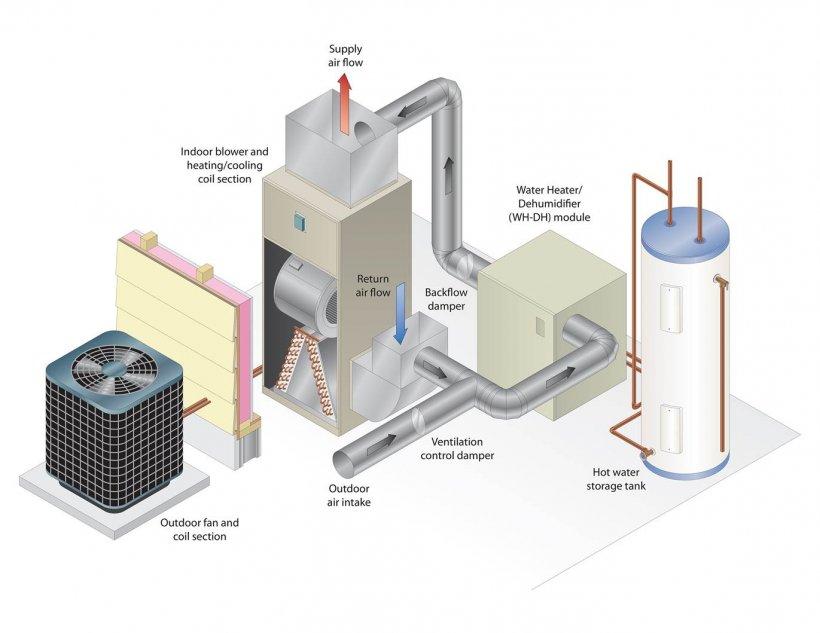Invention Reference Number
Inventors
Licensing Contact

Summary
Air-source integrated heat pumps (ASIHP) are multi-functional, capable of meeting all home comfort requests, including space cooling, space heating, domestic water heating and energy storage. But it is difficult to allocate refrigerant charges between the active and inactive heat exchangers, and optimize active system charge as needed for individual working modes. This results in unused refrigerant and inefficient operation. This technology configures and controls management of refrigerant charge allocation to optimize multi-mode performances. Thus it solves the problem of wasted and inefficient refrigerant charge migration, by using three four-way valves and two electronic expansion valves in one unit that regulate refrigerant flow to the right components at the right time.
Description
This invention uniquely combines three four-way valves, two electronic expansion valves, and two one-way valves, and a suction line accumulator to optimize charge allocations in individual operation modes of air-source integrated heat pumps. Three four-way valves dictate the mode switch and refrigerant flow directions. The two electronic expansion valves automatically allocate refrigerant mass in active components, and store excess charge in an idle heat exchanger and suction line accumulator by controlling the compressor discharge pressure (or condenser subcooling degree) as a function of the entering air and water temperatures. A typical air conditioner has two heat exchangers, one indoor and one outdoor, but this invention combines all modes in one unit that is multifunctional for heating, cooling and water heating. Managing the valves allocates refrigerant where and when necessary for more efficient operation. This is a basic configuration and control strategy to allocate refrigerant from unused components to active components in multiple functional working modes. It facilitates seven working modes to satisfy energy efficiency and comfort simultaneously. It does not need special charge migration operation, and can complete a mode transition via moving refrigerant mass from one condenser to another condenser within two minutes. It has parallel paths at the discharge side, resulting no extra flow resistance caused by the new water-to-refrigerant heat exchanger. It maximizes the flexibility of water heating, including superheating, full condensing and parallel condensing. Thus, the heat pump water heating operations cover a wide range of ambient and water entering temperatures.
Applications and Industries
- HVAC industry
- Residential home-building
- Large hot water consumers, i.e., hospitals, colleges
Benefits
- Increases energy efficiency and comfort
- Decreases energy waste
- Allocates refrigerant where and when needed
- Combines seven working modes in one unit
- Maximizes flexibility for space heating, cooling, and water heating, including sensible heating energy storage

